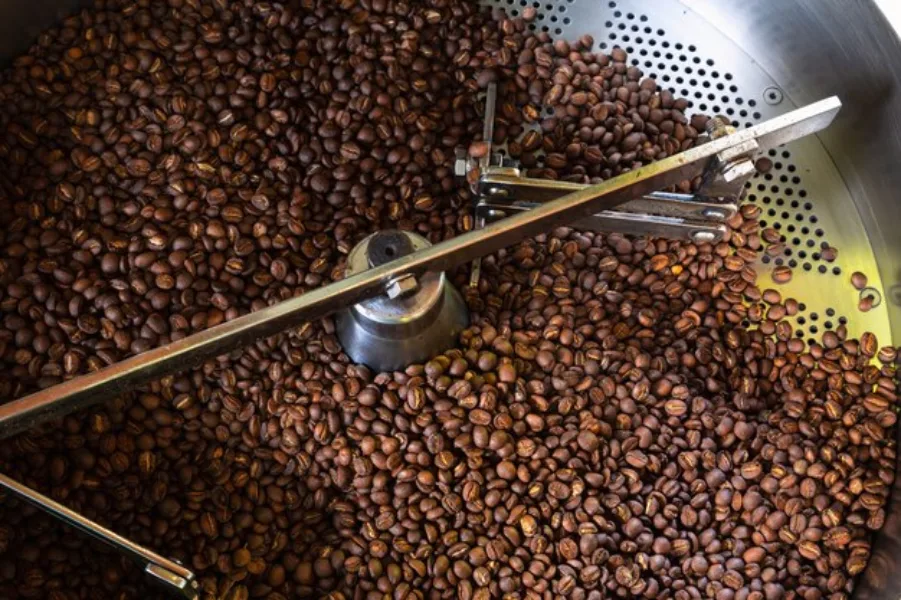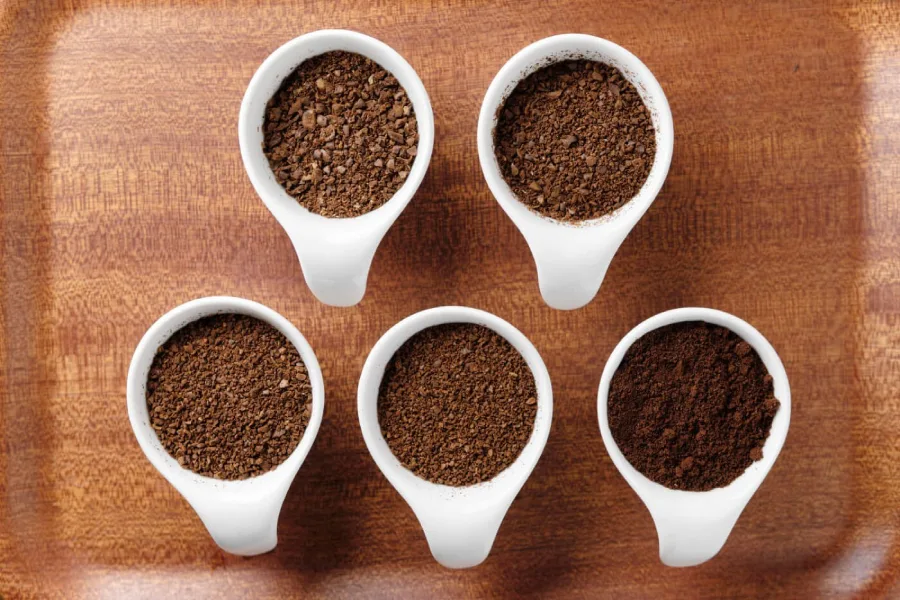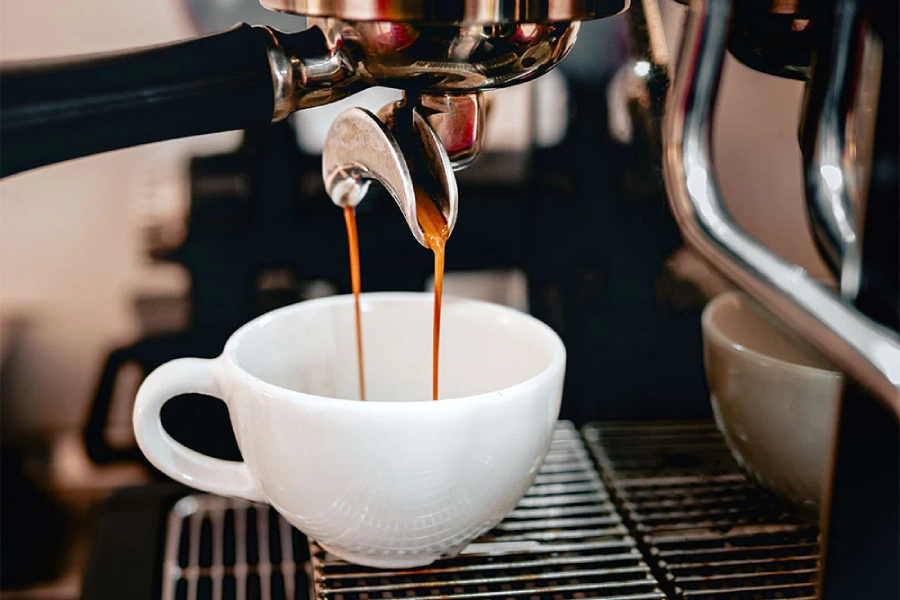Espresso Beans Vs Coffee Beans: Are They Same or Difference?

Coffee is not just a type of drink but a certain form of lifestyle as well. Is it too hard to imagine more than 2.25 billion cups being consumed each day? From finding your morning coffee on the way to work to gathering with friends at a café, coffee tends to bring people together.
Besides the health benefits of coffee, most of us choose it for the rich and complex flavor that only perfectly roasted beans can pull off. So, do you know the beans labeled at coffee shops? Some packages say “espresso beans” while others say “coffee beans”. Are we talking about two completely different beans, or is this just some clever marketing? Let’s get down to understanding how things work with the beans: Espresso beans vs coffee beans.
What are Coffee Beans?
The coffee beans are seeds nestled inside red or purple fruits called the Coffea fruit. These seeds develop into the form we know as coffee beans through the various processes of harvesting, processing, and roasting.
There is a wide range of coffee beans depending on their origin, growth form, processing method, and roast degree. All types of coffee beans tend to be green with grassy-smelling characteristics when unroasted. Roasting then converts many common beans into various flavors and aromas.
What are Espresso Beans?
Espresso beans are essentially coffee beans that are roasted a little longer and darker to serve under conditions created by an espresso machine. These beans are mostly small and heavy, roasted to an even greater extent for bold flavor. Finely ground and at high-pressure brewed, they give out a thick, aromatic drink that is used as the base of many popular coffee drinks.
Espresso Beans vs Coffee Beans: 5 Main Differences
Espresso beans and coffee beans come from the same coffee cherries, but their processing follows different paths. Let us take you through some fascinating differences.
1. How they are prepared
The roast level between espresso beans and coffee beans is one of the factors you consider to distinguish them. Roasting is the process of taking green coffee cherries and turning them into scrumptious delights. As the beans heat up, there is a series of chemical reactions that start to develop flavor and aroma.
Espresso beans are roasted to a much darker stage, often too dark or extra dark. This deep roast brings out a rich, multi-layered flavor with lots of dark chocolate, caramel, and nuts. The flavor development in espresso goes in a bold and strong way, with a thick, creamy texture inside.
Roasting of the coffee beans varies in degree; it all depends on a person’s taste. The common levels of roast include:
- Light Roast: The beans are lightly roasted to retain their natural flavor and zest. These beans possess more caffeine and a bright acidity that tickles your taste buds.
- Medium Roast: Roasted to a deeper color, medium roasts have a balanced flavor profile that shows up both with acidity and sweetness.
- Medium-Dark Roast: These are increased medium roasts. The flavor is rich and sometimes takes on a smoky or spicy edge with tinges of dark chocolate and caramel.
- Dark Roast: The roast is the most intense in appearance; roasted to a deep, almost oily sheen. Dark roasts are usually used for espresso and other strong coffee drinks.

2. How they are ground
The grind of an espresso bean must be fine to achieve the largest surface area when brewing. The size allows hot water to pass through the grounds at a very slow rate and yields a strong, full-bodied shot.
The coffee beans may be ground into several sizes depending on how it is to be brewed. The grind size for the French press is coarse; for drip coffee, it’s best at medium; and fine grind works best for pour-overs.

3. Amount of natural oils
One major distinction between espresso beans vs coffee beans is their oil content. The degree of oil formation varies according to the roasting level.
Because of the dark roasting process, espresso beans allow their natural oils to come to the surface. The oil contributes to the richness, boldness, and sometimes slightly greasy mouthfeel of espresso.
On the other hand, there is less oil in the coffee beans when it comes to light roasts. The development of oils is restricted by the shorter time and temperature. These all create a brighter, cleaner cup with increased acidity and less body.
4. How they are used
Brewing espresso beans occurs at very high pressure. The heated water is forced through ground espresso beans to produce a strong shot. Due to the presence of high pressure, the flavors are extracted, giving a bold, extreme flavor with a thick, creamy feel.
Coffee beans may be brewed using many methods, such as drip and pour-over. Each method extracts different flavors and oils from the beans, so there is a very wide range of experiences with coffee beans.

5. Concentration
The taste of espresso beans vs coffee beans depends upon the beans’ growing, processing, and roasting.
Espresso beans are roasted darker, giving them a bolder and stronger flavor. High-pressure brewing extracts a concentrated, complex flavor. Think of rich chocolate, caramel, and a bit nutty. Espresso beans are less acidic and thus come across as smooth and heavy on the tongue.
With coffee beans, light roasts showcase fruity or floral notes and are best if one likes the delicate, nuanced cup. Medium roasts can balance out with a bit of sweetness and acidity. And dark roasts can have an espresso-like taste, although a little more mellow.
Comparison table of espresso beans and coffee beans
| Espresso Beans | Coffee Beans | |
| How to prepare | Very dark, strong flavor. | Various roast levels (light to dark), diverse flavors. |
| Smoothness when grinding | Finely ground, used for espresso machines. | Ground according to brewing method (coarse to fine). |
| Natural oil content | More oils, rich and bold taste. | Less oil, brighter and more acidic flavor. |
| How to use | Brewed under high pressure for espresso. | Used for drip, pour-over, French Press, etc. |
| Concentration and flavor | Bold, less acidic, smooth and heavy. | Depends on roast: from delicate to robust. |
Final Thought
Coffee Expressio hopes you’ve outgrown the debate on “Espresso Beans vs coffee beans”. Although both espresso beans and coffee beans come from the same bean, they have some differences in their processing and brewing. The article has mentioned a few of the major differences between the two: roast level, grind size, brewing procedure, and taste. When coffee lovers understand the differences, they’ll appreciate the nuances of the drink and be able to choose the perfect beans for their taste profile.
FAQs
Actually, there is no type of beans for espresso and other beans for coffee. In fact, it is the same beans but roasted differently. The beans for espresso are roasted darker, and this provides them with a strong, bold flavor. The roast of coffee beans may be light, medium, or dark with their unique flavor character.
Yes, you can use espresso beans for normal coffee. These are primarily coffee beans with a darker roast. However, the flavor of the coffee might be biased towards strong and bold. If you have a lighter kind of coffee, you can adjust the brewing process or add more water.
You can grind the coffee beans into espresso, but it is all about grind size. Espresso does require an extremely fine grind, almost powdery in texture. For better precision in grind size, a burr grinder is recommended.




